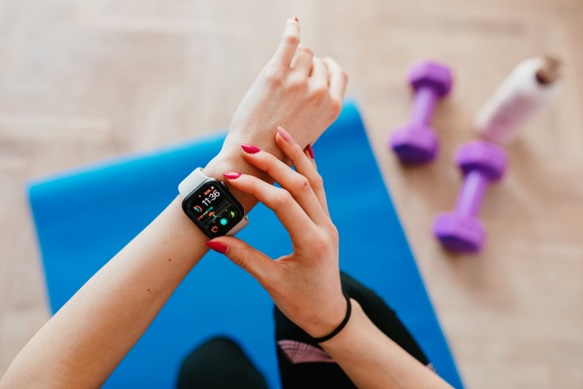
Have you heard of heart rate variability before? It’s a measurement that reveals a lot about your current stress levels and physical health. Originally, HRV metrics were used in diagnostics to assess a person’s risk of cardiovascular disease. Nowadays they get used by athletes and everyday gym goers to help them decide whether to train hard or take a rest day instead. If you’ve never heard of HRV but are intrigued, read below. This article will take you through what heart rate variability is, how it’s measured and why you should use it to make more informed decisions regarding your health.
What Is Heart Rate Variability A Measure Of?
Contrary to what you might believe, your heart doesn’t beat in a consistent pattern like a metronome. The amount of time between beats can vary significantly. Some intervals might be much longer than others. Tracking the number of milliseconds between beats can give you a score which is known as your heart rate variability. If the gaps between your heartbeats are very random lengths, this is thought to be a good thing. A highly variable heart rate is a sign that your parasympathetic nervous system (PNS) is active and you’re in relaxation mode. This nervous system is often referred to as the rest and digest state. On the other hand, your sympathetic nervous system (SNS) is your fight or flight mode. Our bodies switch on the sympathetic system when we need to respond to dangerous situations. In this state, your blood pressure increases and the intervals between your heartbeats are similar in length; a bit more like clockwork. A low HRV score is a signal that you’re in a stressed out state and might need to take it easy until your body settles back down again.
How Do I Measure HRV?
Previously, one would need fancy electrocardiogram machines to measure their heart rate variability. Thanks to advances in technology, this is no longer the case. These days, any average person can find out their HRV score provided they have the right fitness watch or smartphone. These devices use flashing green lights to measure your heart rate and blood pressure. Some smartphones enable you to track HRV by placing your fingertip over the camera and watches usually have heart rate sensors built into them. Of course a Fitbit probably won’t give you as accurate a reading as a state of the art ECG machine, but it gets pretty close. Garmins, iPhones, Fitbits and the like are all incredible tools for those wanting to keep track of their health and fitness. Studies show that people who wear fitness watches tend to have better overall health markers compared to non-users. This is because what gets measured gets managed. Those who self-monitor their physical activity are more likely to get the recommended amount of daily exercise. Ignorance might be bliss but it definitely won’t help you achieve your fitness goals.

What’s A Good Score?
A good heart rate variability score will depend on the individual. An HRV of 135 might be high for one person but unusually low for another. This is because your score is influenced by so many personal factors. Genetics, age, caffeine intake, alcohol consumption, exercise and sleep all play a role. Don’t compare your HRV to another person’s. It’s best to compare yourself to yourself. On average it seems that being young, male or an elite athlete will predispose you to having a higher score. HRV naturally goes down as you get older and may even vary depending on what time of year it is. Regardless of what the specific number is, research suggests that a highly variable heart rate is a good thing. It’s a sign that your body is ready to take on stress and you have good cardiovascular fitness. A heart rate that is not particularly variable signals that you may be stressed, dealing with an underlying health issue or potentially experiencing depression.

What To Do When HRV Is Low?
Some factors that influence HRV are beyond our control. Genetics, for example, can not be altered. In saying this, there are things you can do to ramp your HRV back up on the days your score is lower than usual. As mentioned above, a low HRV score can be a sign that you’re in fight or flight mode. Maybe this is because you overtrained or maybe you didn’t get a full night of sleep. Figure out the cause of your stress and then take steps to promote recovery. If your HRV is low because you did a punishing workout the day before, take today off the gym and prioritise rest. If sleep deprivation is the cause of your stress, make sure to get an early night. Focus on frequent hydration and make nutritious choices. Avoid alcohol and strenuous activity. Maybe even treat yourself to a massage or do some gratitude journaling. Anything that takes you out of your sympathetic nervous system will get your HRV back to a normal level.

Conclusion
Your HRV score is a valuable measurement in both clinical and everyday settings. It gives you insight into your current stress levels and can help you decide whether to go hard that day or take it easy. Additionally, this data can be an important predictor of heart disease and other sinister health issues you might need to address. Seeing a frequently low HRV score might give you the motivation you need to make better lifestyle decisions. We currently live in the Information Age but that only matters if we use that information to change our lives for the better. Start tracking your HRV today and see if you can use that data to be a more health-conscious human being.
Written by Lauren Carruthers.
